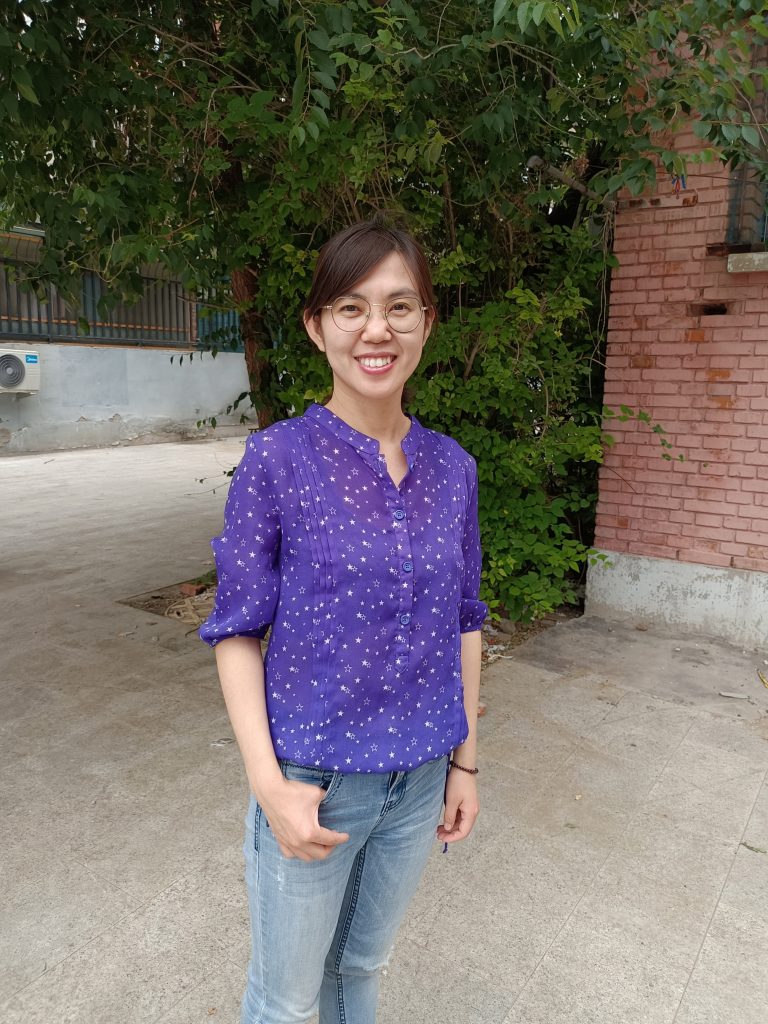Mei Niu: The Plant Cell First Author

 Mei Niu, first author of “Rice DWARF AND LOW-TILLERING and the homeodomain protein OSH15 interact to regulate internode elongation via orchestrating brassinosteroid signaling and metabolism”
Mei Niu, first author of “Rice DWARF AND LOW-TILLERING and the homeodomain protein OSH15 interact to regulate internode elongation via orchestrating brassinosteroid signaling and metabolism”
Current Position: Research Assistant in Chinese Academy of Agricultural Sciences, China
Education: PhD in Genetics at Nanjing Agricultural University, China
Non-scientific Interests: Cycling and Chinese Zither playing
Brief Bio: When I was a child, my mother taught me how to take care of flowers and plants. I fell in love with them and it was natural that I choose biology as my major in college. I studied plant genetics in Nanjing Agricultural University during my postgraduate study. Since rice is my favorite staple food, I used rice as the research object during this period, and gradually realized that my passion was to make rice stronger and more productive. After graduation, I came to work in the research group of Professor Hongning Tong, who focuses on studying brassinosteroids (BR), the steroid hormone having great potential in improvement of crop yield and resistance. It’s lucky that both Prof. Tong and I are highly interested in how the rice internodes grow up one by one, and how BR participates in coordinating this elongation progress. Excitingly, we found that DLT, OSH15 and OsBRI1, three well-known plant height regulators underlying the classical dwarf mutants d62, d6 and d61 respectively, form a molecular module. DLT interacts with OSH15, which mainly expresses in rice lower internodes, and the protein complex directly targets BR signaling and metabolism genes, including OsBRI1, to coordinate the internode elongation. I look forward to having more opportunities to cooperate with the colleagues interested in internode development.
姓名:牛梅
目前职位:助理研究员,中国农业科学院作物科学研究所
教育经历:遗传学博士,南京农业大学
兴趣爱好: 骑行,古筝
个人简介:
从小妈妈就带我认识花花草草,受她影响,热爱大自然的我上大学就选择了生物专业,并在大学毕业后,继续报考南京农业大学植物遗传学方向的研究生。由于大米是我最爱吃的主食,我选择水稻作为研究对象,在研究生阶段的学习过程中,渐渐找到了自己的科研目标——让稻米更高产更优质。博士毕业后我加入童红宁研究员的团队,接触并了解到植物激素油菜素内酯 BR 对水稻具有极大的增产增抗潜力。结合实验室已有研究 BR 相关经验,我们将研究内容聚焦于探索水稻茎节如何递次伸长,以及 BR 如何参与协调这个过程。幸运的是,我们发现三个已知分别控制 d62,d6 和 d61 株高突变体的基因 DLT,OSH15 和 OsBRI1 共同形成一个分子模块。OSH15 主要在茎节中表达,尤其是底部茎节,且在蛋白水平上与 DLT 互作生成复合体,共同调节包括 OsBRI1 在内的多个 BR 代谢及信号相关基因的表达,以协同控制茎节伸长。希望有机会与各位同仁志士在茎节发育方向进行交流合作。



